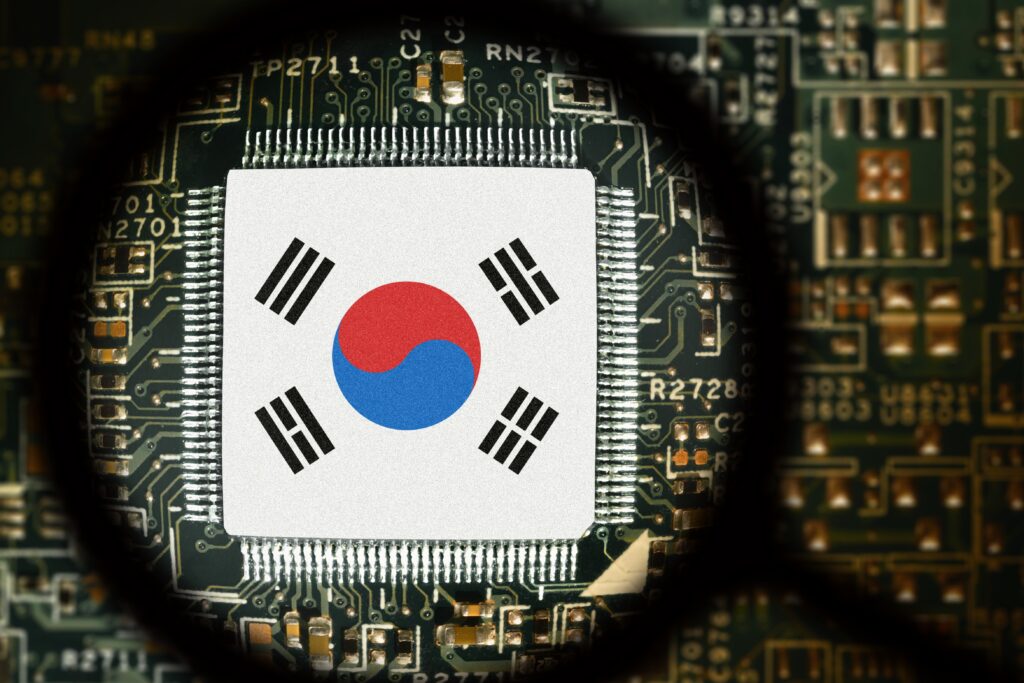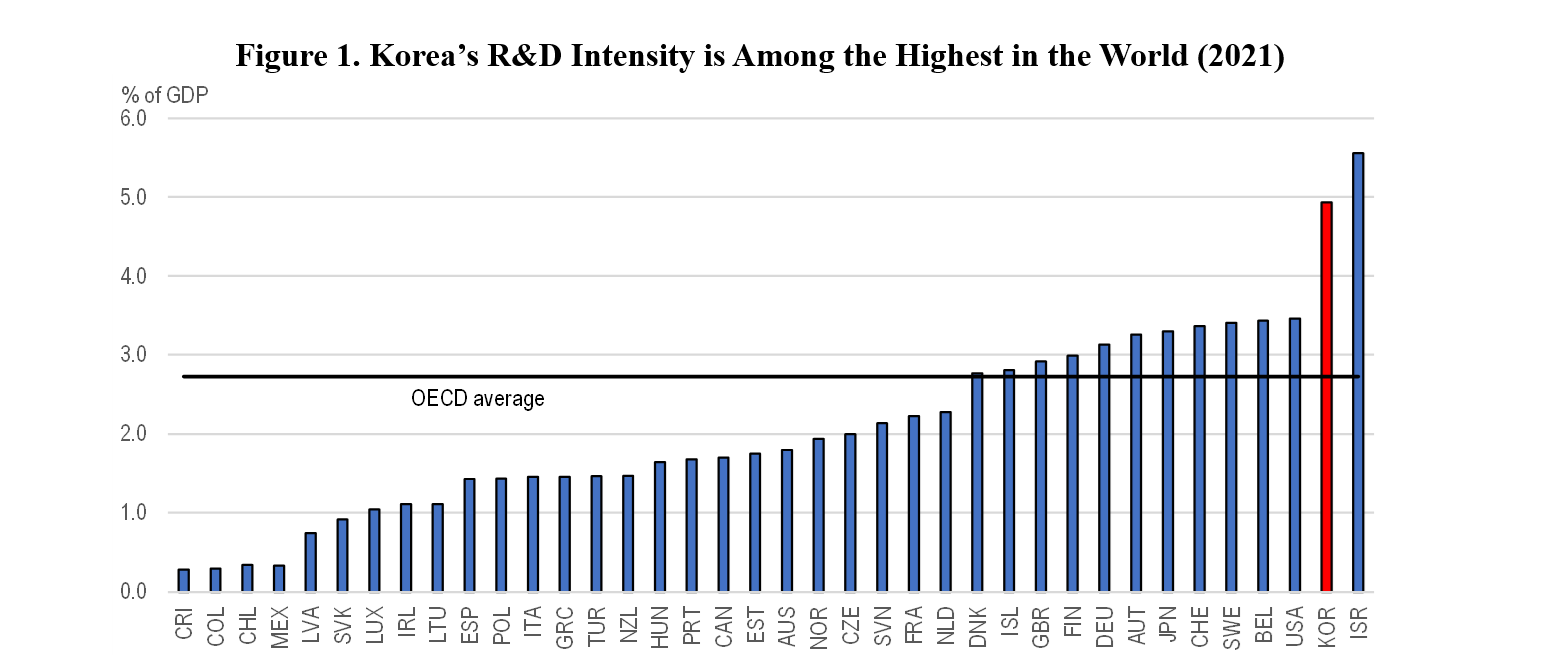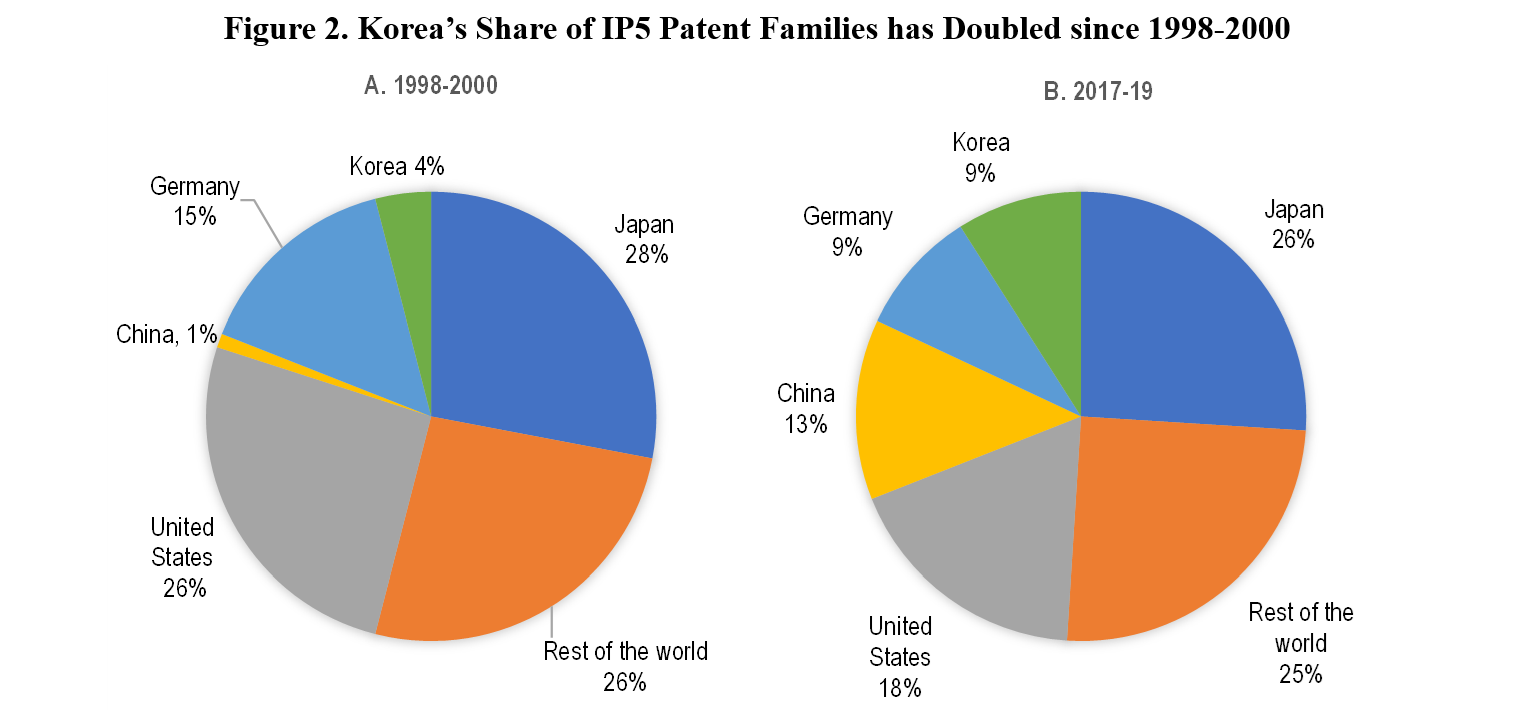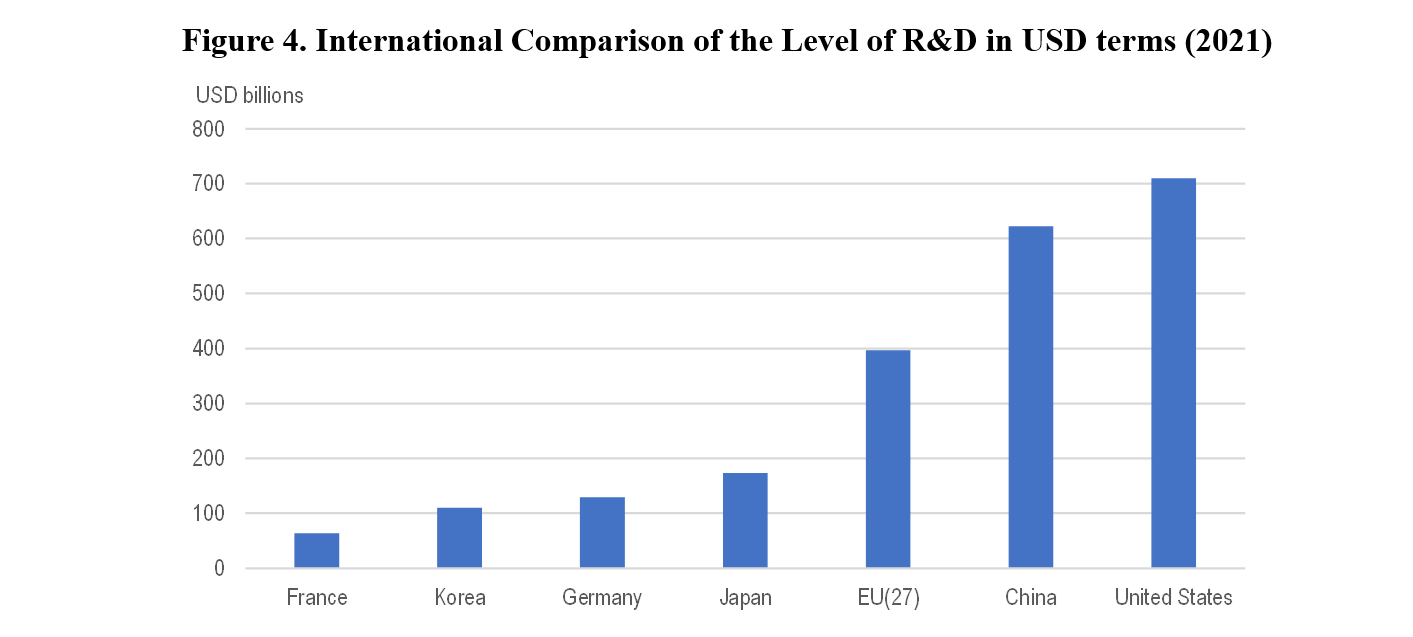The Peninsula
Improving Korea’s Innovation System

Innovation has played a vital role in Korea’s rapid economic development. Initially led by the introduction of new technology from abroad, Korea has achieved sustained progress toward the global innovation frontier. Korea’s innovation inputs in terms of human capital and research spending are among the highest in the world. It also has the highest share of tertiary graduates among young people, many of whom are in the science, technology, engineering and mathematics (STEM) disciplines. Korean youth are exceptionally skilled in using digital and ICT technologies, enabling employers to integrate emerging technologies quickly. Korea’s R&D spending at 4.9 percent of GDP in 2021 trails only Israel and is substantially higher than in the United States (Figure 1). Investment in R&D helped double Korea’s share of IP5 patents (those from the world’s five largest patent offices) from 4 percent in 1998-2000 to 9 percent in 2017-19 (Figure 2).

Note: IP5 patents refer to patents filed in at least two patent offices worldwide, including one of the five largest patent offices (United States, EU, Japan, Korea and China).
Source: OECD.Stat, Research and development (R&D) – Gross domestic spending on R&D – OECD Data.

Source: OECD (2023), OECD Reviews of Innovation Policy: Korea 2023 | en | OECD.
Technological progress is essential to sustain Korea’s economic growth, which slowed from an annual rate of 4 percent over 2003-13 to 2.5 percent over the past decade. In addition, Korea faces challenges related to population aging and the transition to net zero carbon emissions. With the world’s lowest total fertility rate, at only 0.7, Korea is projected to experience rapid population aging and a decline in its labor force, creating the need for labor-saving technology. The Korean economy’s emphasis on manufacturing and reliance on fossil fuels makes the green transition particularly challenging. The share of renewable energy in Korea’s primary energy supply is the lowest among OECD countries.
Weak R&D linkages between businesses, universities and the public sector
The business sector finances more than three-quarters of Korea’s R&D spending, similar to the cases of Japan and the United States (Table 1, Panel A). The government’s share in Korea is relatively large, while the share of higher education in financing R&D was low at only 0.6 percent in 2021. While universities employ around three-quarters of PhDs in Korea, they performed only 9.1 percent (Panel B).
Table 1. A Comparison of the Sources of R&D Funding and the Sectors’ Performing R&D (2021)
| A. Sources of R&D financing | B. Sector performing R&D | ||||||
| Korea | Japan | US | Korea | Japan | US | ||
| Business | 76.1 | 78.1 | 67.9 | Business | 79.1 | 78.6 | 77.6 |
| Government | 22.8 | 15.5 | 19.9 | Government | 9.8 | 8.4 | 8.3 |
| Higher education | 0.6 | 5.2 | 4.4 | Higher education | 9.1 | 11.9 | 10.4 |
| Non-profit | 0.2 | 0.7 | 1.1 | Non-profit | 2.0 | 1.2 | 3.7 |
| Foreign | 0.3 | 0.6 | 6.7 | 100.0 | 100.0 | 100.0 | |
| 100.0 | 100.0 | 100.0 | |||||
Source: OECD.Stats, Gross domestic expenditure on R&D by sector of performance and source of funds (oecd.org), accessed April 17, 2024.
Links between the business sector, universities and government research institutes (GRIs) have been underdeveloped in Korea. For example, 97.7 percent of the R&D financed by the business sector in 2021 was performed in the business sector, compared to only 1.7 percent at universities and 0.8 percent at GRIs (Table 2). Weak academia-industry collaboration is reflected in the decline of co-publications between industry and academia during the last decade. The concept of research universities is relatively recent in Korea, which has only a few capable of meeting the knowledge demands of world-leading companies, competing with top international academic institutions and generating a substantial number of start-ups and spin-offs. Strengthening mutual R&D cooperation between universities and the business sector is essential. The R&D capabilities of universities should be strengthened by promoting their autonomy and enhancing their evaluation and assessment systems. A more significant university role in R&D would also enhance basic research, which is the key to breakthrough innovations. In Korea, only about 20 percent of basic research takes place in universities, compared to 50 percent to 75 percent in other countries.
The government established the GRIs in the 1960s with the objective of transferring technology to the private sector. Today, Korea’s large companies are autonomous and have huge R&D budgets. For example, Samsung alone spent around KRW 21.2 trillion (USD 15.4 billion) on R&D in 2021, close to the KRW 27.4 trillion spent by the entire government. While some GRIs still work closely with the corporate sector, others compete against it.
Government efforts to promote linkages between the business sector, universities and GRIs have focused on technology transfers. All GRIs and universities have technology-licensing offices, which were established in 2015, but the licensing revenue generated is relatively limited. Promoting joint research and cooperation may be more successful. Increasing the mobility of researchers between academia, business and government would strengthen R&D links between different sectors. One method to enhance mobility would be to require that researchers change sectors at least once before receiving permanent contracts.
Table 2. R&D by Source of Funding and Sector Performing the R&D in Korea (2021)
| The division of funds by the sector performing the R&D | ||||||
| Source of funds | Share of
funds |
Business | Government | Higher education | Non-profit sector | Total |
| Business | 76.1 | 97.7 | 0.3 | 1.7 | 0.3 | 100.0 |
| Government | 22.8 | 20.0 | 41.5 | 31.9 | 6.7 | 100.0 |
| Higher education | 0.6 | 4.8 | 1.0 | 93.7 | 0.5 | 100.0 |
| Foreign | 0.3 | 51.2 | 3.7 | 21.0 | 24.1 | 100.0 |
| Non-profit sector | 0.2 | 8.2 | 19.4 | 28.2 | 44.1 | 100.0 |
| Total | 100.0 | |||||
Source: OECD.Stat, Gross domestic expenditure on R&D by sector of performance and source of funds (oecd.org), accessed April 17, 2024.
Korea’s international R&D linkages are also weak
Along with greater cooperation between the business sector, universities and GRIs in R&D, the Korean innovation system needs to be better integrated into international innovation networks, which would stimulate the flow of ideas and exploit international opportunities. Foreign funding accounted for only 0.3 percent of R&D investment in Korea in 2021 compared to 6.7 percent in the United States (Table 1). This contributes to the low share of international cooperation in patents: only 2.4 percent of Korean patents included foreign co-inventor(s), the lowest in the OECD (Figure 3).

Source: OECD.Stat, International co-operation in patents (oecd.org), accessed April 18, 2024.
A variety of strategies could strengthen international linkages:
– Facilitating the international mobility of researchers and innovators, particularly given Korea’s demographic situation.
– Increasing internationalization in recruitment and the allocation of R&D funds.
– Creating incentives for researchers to participate in international collaboration. Korea has a low number of international co-publications compared to other OECD countries.
– Expanding foreign direct investment (FDI) in Korea, which is the second lowest among OECD countries. The OECD index of restrictions on FDI inflows, which is based on foreign equity limits, discriminatory screening or approval mechanisms, limits on key foreign personnel, and operational restrictions, ranks Korea as the sixth most restrictive among OECD countries.
Conclusion
Korea needs to increase the return on its substantial investment in innovation to sustain economic growth in the face of a shrinking population and address challenges such as climate change. Better integration of R&D by the business sector, universities and GRIs is an essential aspect of such a strategy. In addition, greater involvement in the international innovation system would be beneficial. Such an approach would help Korea compete with countries where the scale of R&D is significantly larger (Figure 4).

Source: Main Science and Technology Indicators: Volume 2022/2.
Randall S. Jones is a Non-Resident Distinguished Fellow at the Korea Economic Institute of America. The views expressed here are the author’s alone.
Photo from Shutterstock.
KEI is registered under the FARA as an agent of the Korea Institute for International Economic Policy, a public corporation established by the government of the Republic of Korea. Additional information is available at the Department of Justice, Washington, D.C.
